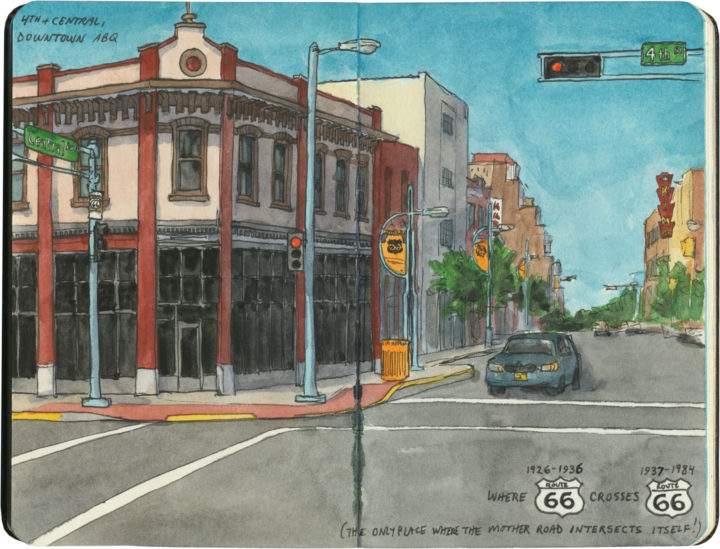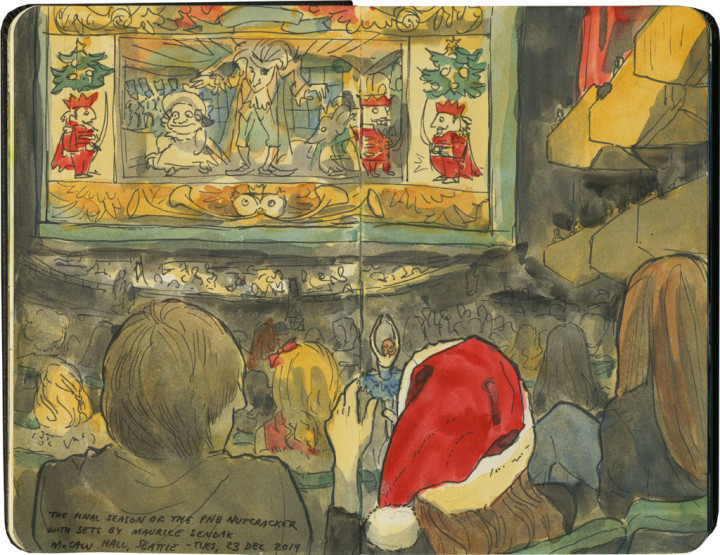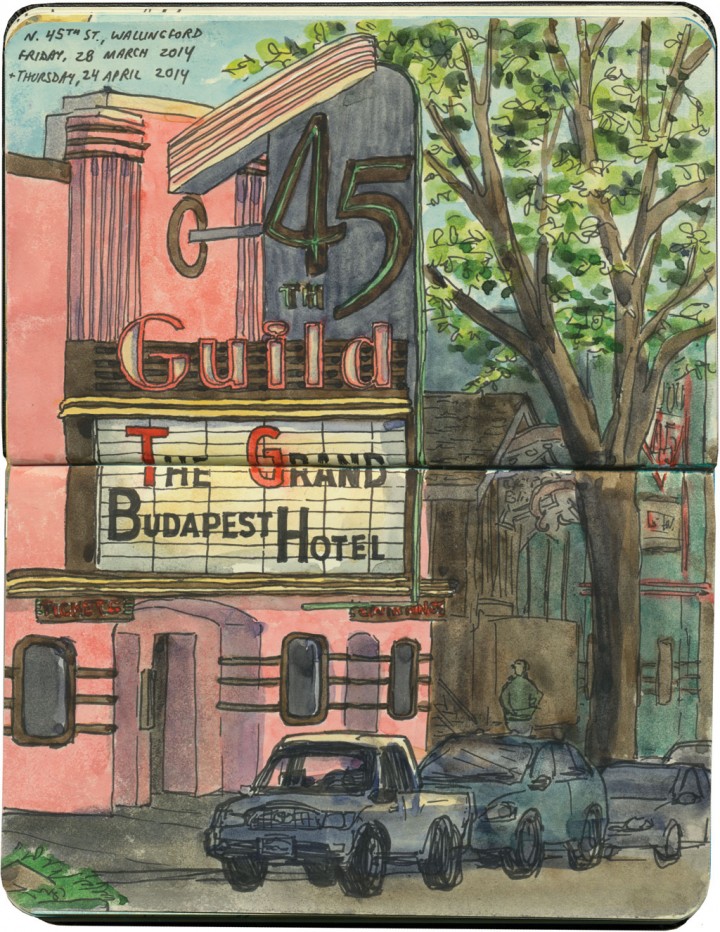This post is part of an ongoing series called 66 Fridays, which explores the wonders of old Route 66. Click on the preceding “66 Fridays” link to view all posts in the series, or visit the initial overview post here.
In downtown Albuquerque is an unassuming corner with a curious distinction. This is the place—the only place—where Route 66 intersects itself.
It’s not so unusual to have several Route 66-es in the same city—after all, Tulsa has at least three, and St. Louis changed the alignment of the route so many times I’ve lost track of the number. Yet nowhere else along the Mother Road do two different alignments actually cross each other. You see, when Route 66 was first established in New Mexico in 1926, the logical thing to do was to send the road through the capital city—so off to Santa Fe it went, and then it curved southward to come into Albuquerque from the north. At that time, there was no straight-line route across New Mexico, so travelers coming to Albuquerque from the east had no choice but to take that winding, partial-dirt, mountainous road through the capital first. But then, quite suddenly, all that changed: just a few years later, a new 66 cut an arrow-straight path into Albuquerque from the east and bypassed Santa Fe entirely. (And today many people have no idea that 66 ever went to Santa Fe at all.)
Like everything else along Route 66, there’s a story behind this. The short version is this: Arthur T. Hannett, who was governor of New Mexico when Route 66 was born, lost his reelection bid in 1926, and found himself with an axe to grind. Convinced he had been ousted by a conspiracy on the part of his political opponents at the state capitol, he hatched a scheme to reroute 66 away from Santa Fe in revenge.
The trouble was, he had only a little over a month before his successor would be sworn in. So he ordered nearly every piece of road-construction equipment in the northern half of the state to be diverted to his project, and made every construction worker he could get his hands on work nonstop to cut a new road bed from Santa Rosa to Albuquerque. The workers slept at the construction sites, toiled through snowstorms and skipped the holidays, and the new 69-mile road was completed in just 31 days. By the time the new governor, Richard Dillon, took office on January 1, 1927, it was too late. Despite opponents trying to block the project during those 31 days (including sabotage attempts where people put sand in the gas tanks of the construction equipment), nobody could deny the convenience of a straight, fully-paved road. The new route saved hours of driving, so before long, motorists were already using it heavily, leaving Santa Fe in the dust. It took another ten years before the road was paved all the way to the Texas border and the new section gained the official Route 66 designation, but by then it was already the main arterial across the state.
That story isn’t the only thing interesting about the corner of 4th and Central. That spot’s other claim to fame is what might just be Albuquerque’s best and most iconic building: the KiMo theatre.
Built in 1927 in a spectacular blend of Art Deco and Pueblo Revival styles (who knew those two went together so well?!), the theater’s name translates to “mountain lion” in Tewa, the language spoken by many of the region’s Pueblo people. The KiMo narrowly escaped the wrecking ball in the late 1970s, when residents voted for the city to buy the building. After an extensive restoration completed in 2000, the KiMo is once again hosting public performances.
Yes, that symbol above is what it looks like; and no, it doesn’t mean what you might think. The swastika is an ancient symbol that once had positive connotations in many cultures before Hitler twisted it to his own ends. To the Navajo it stood for the Whirling Log, a healing symbol, and to the Hopi (whose traditions the above design emulates) it represents spiritual wandering.
Oh, and hey: apparently the building is haunted. The theater staff leave appeasement offerings in a back stairwell and everything. The place was closed on the day we were there, so I couldn’t get a look at the inside, but you can bet I’ll be back. Neither angry ghosts or vengeful ex-governors can stop me.






